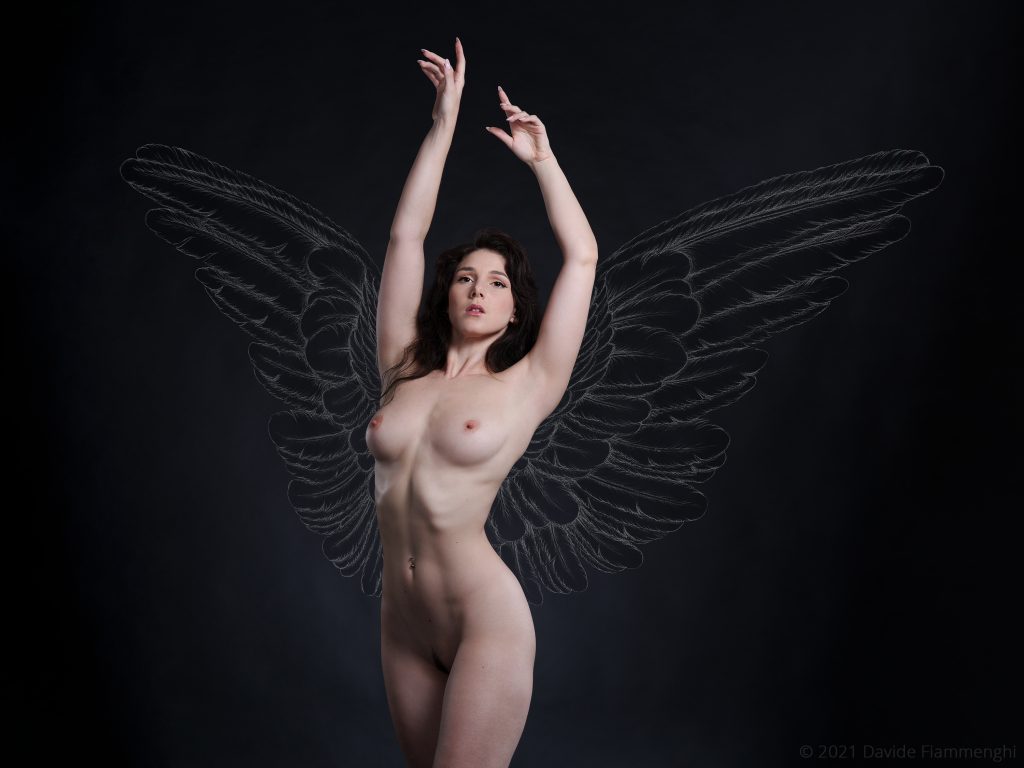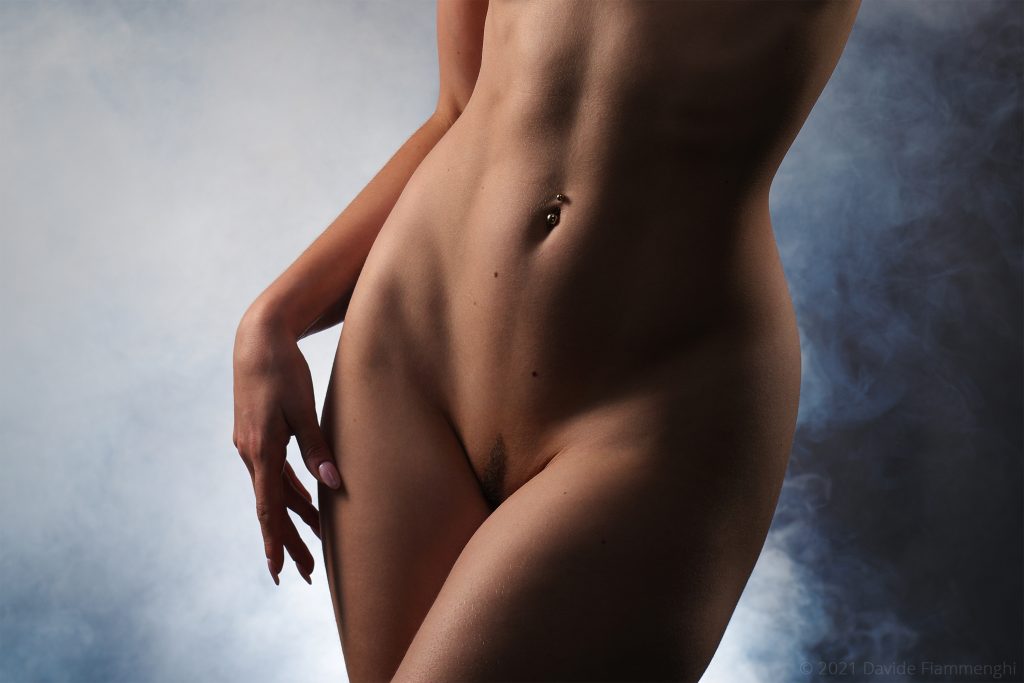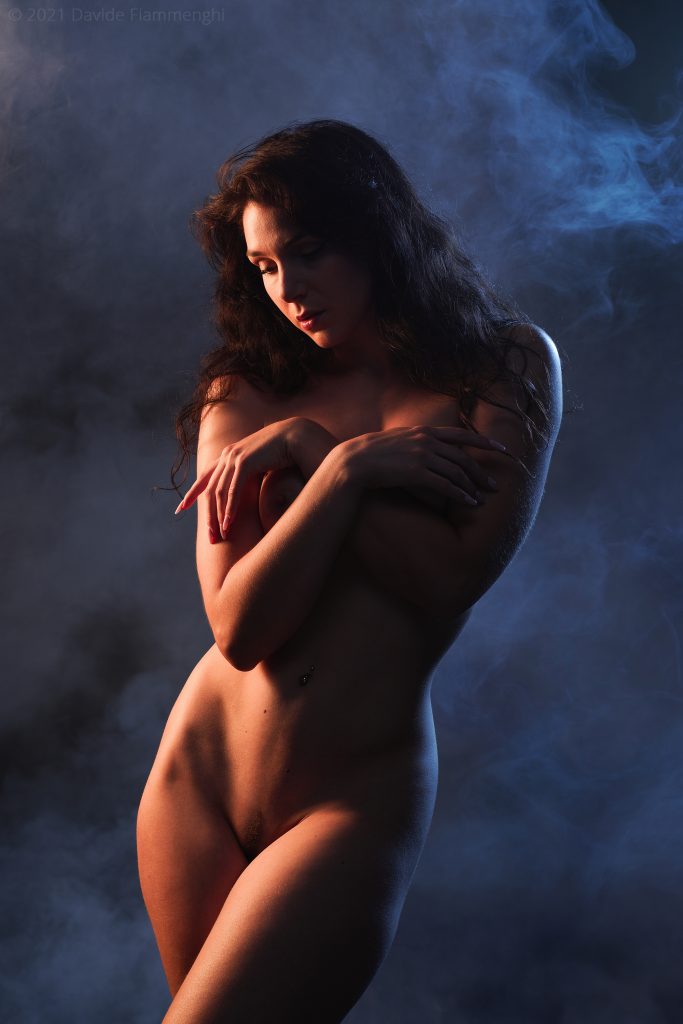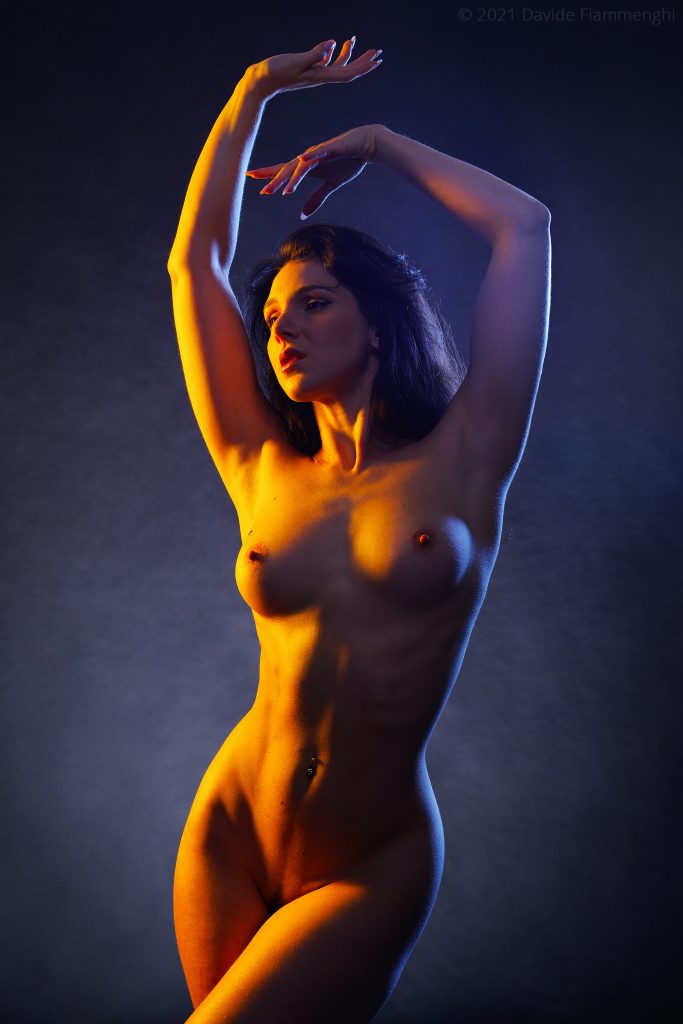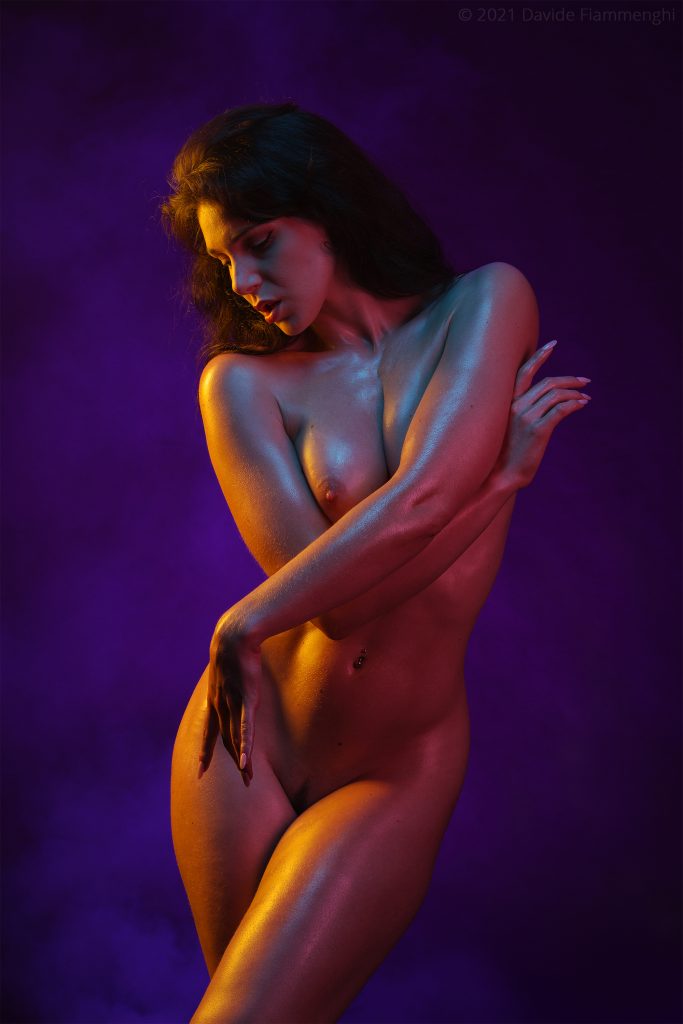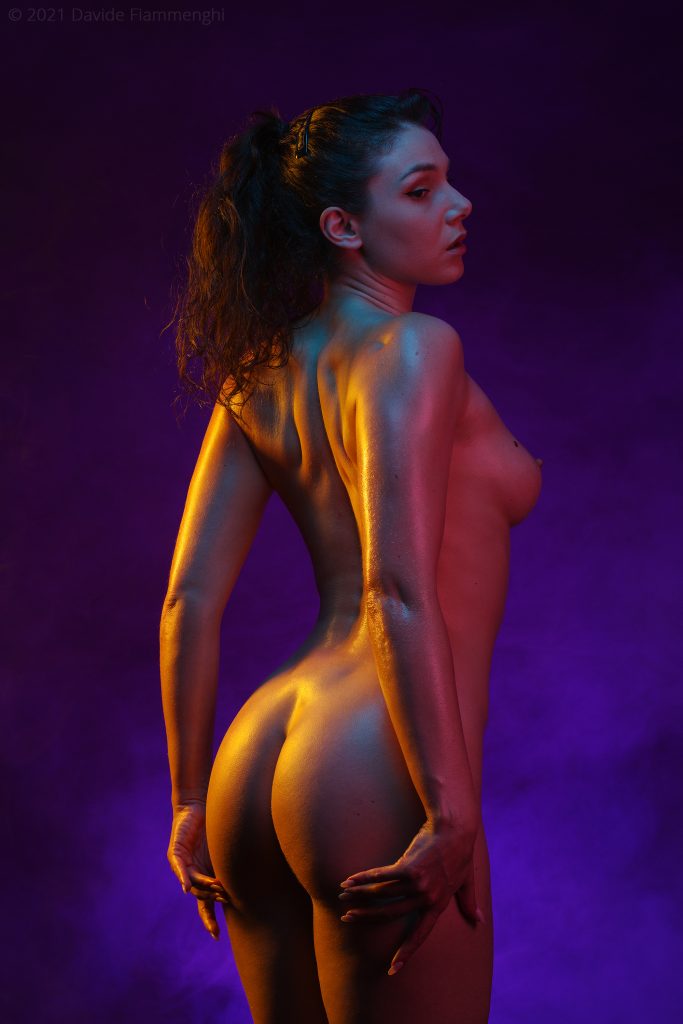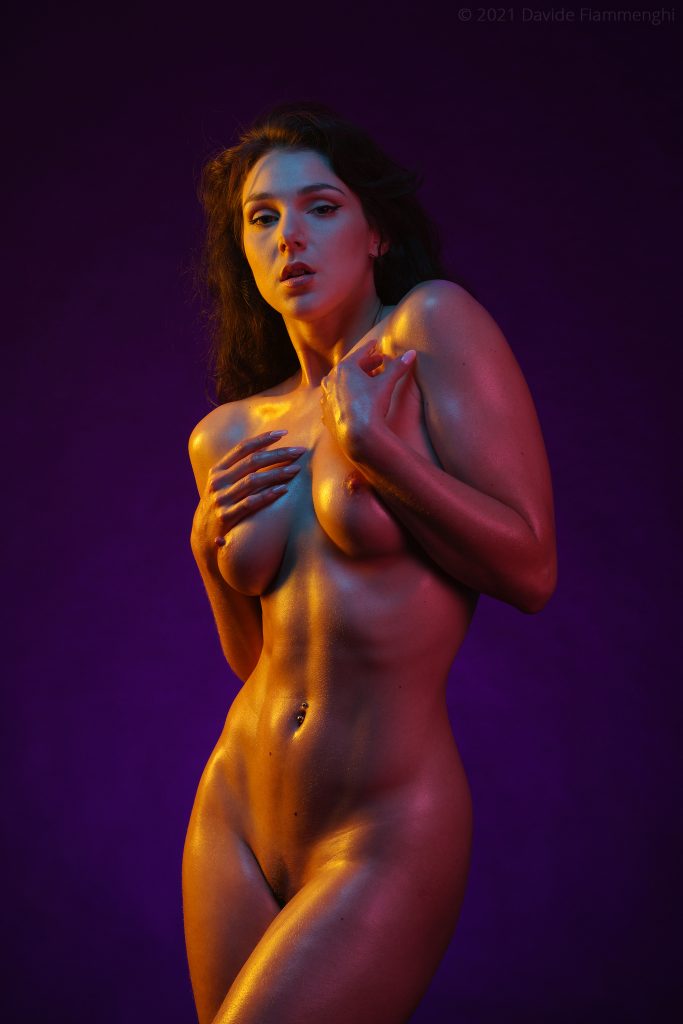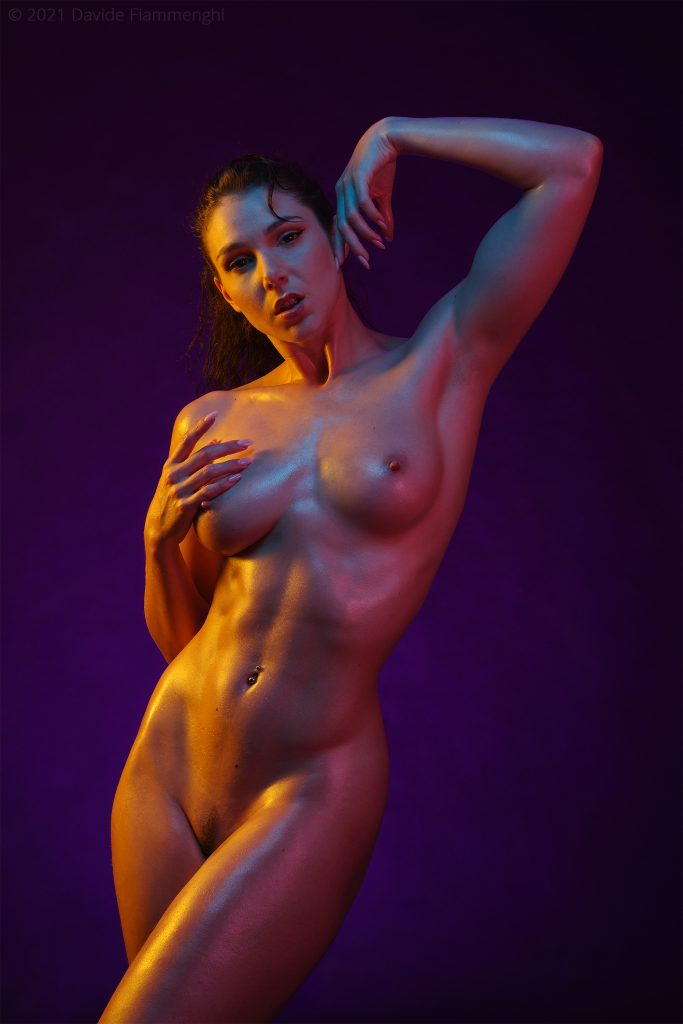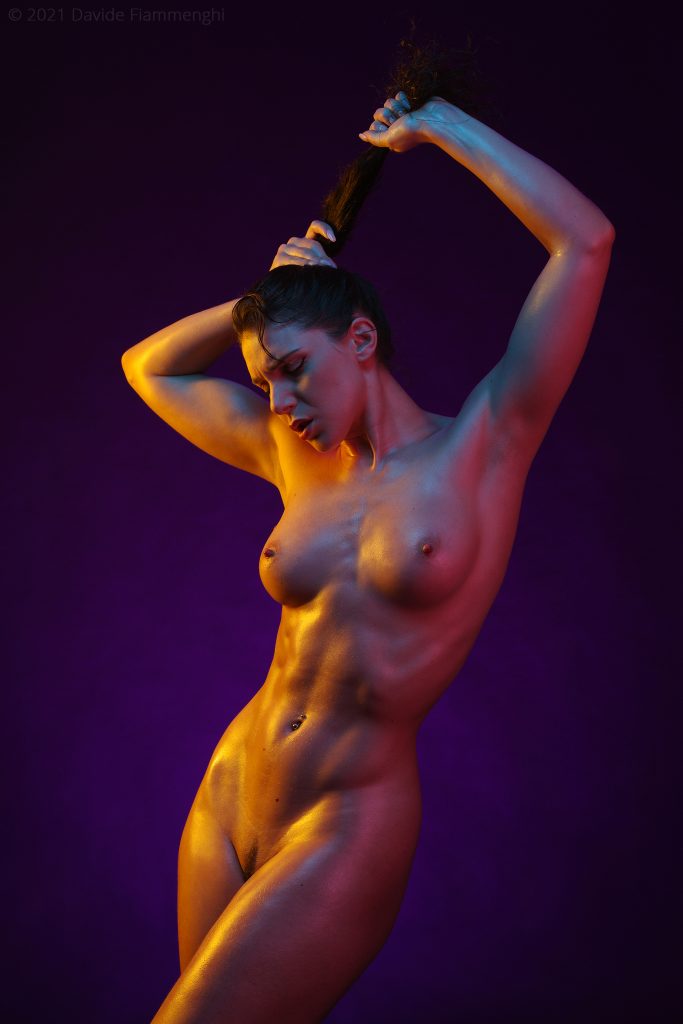Color Nude
Model: Hérodiade Chatnoir
Photographer: Davide Fiammenghi
RCE Foto, Rovigo
June 2021
In the early summer, seizing the opportunity of a brief time window between the easing of the crazy anti-Covid restrictions and the introduction of the infamous Greenpass, I wanted to put into practice the studies that I done in the previous months, asking for the collaboration of Hérodiade Chatnoir. I designed four light lighting schemes to make some color and black & white portraits, all in cowboy shot. The central idea was the emphasis of feminine shapes in the simplicity of the naked body.
I chose to use my Cactus RF60X portable flashes which, compared to most flashes that you can find in photographic studios, ensure the benefit that power level is set directly from the camera body with their V6 II transceiver. In addition, the Cactus system has a minimum power of 1/256, while some studio flashes start at 1/8. As light modifiers I prefer softboxes because they have almost no dispersion and create pleasant catchlights in the eyes. In this session I used two Ø65cm and Ø90cm octaboxes, a 22x90cm rectangular softbox, an 80x80cm reflector panel, a Ø90cm translucent umbrella, a Ø18cm reflector and an altered snoot with the addition of an internal diffuser. To use the portable flash in the rectangular softbox I needed to rotate the head a quarter turn, so I modified an S-type bracket to accommodate the entire flash body. As modeling lamps I use LED bulbs connected to the main.
The photo of the angel was the first of the session, I chose the best pose among several ideas and edited the snapshot adding the negative of the wings previously drawn in charcoal pencil. In the studio I set up an open loop lighting scheme, key light at 45° in Ø65cm octabox, 8:1 fill light in Ø90cm octabox on boom arm, 80x80cm reflector panel (16:1) tilted 45° in front of the model, 8:1 left rim light in 22x90cm softbox, 4:1 right rim light with translucent umbrella coherent with key light, zone III background light in snoot on black card. The fill light created catchlights in the pupils and it was easy to remove them with Photoshop.
The cardboard background always has ripples and to obtain this soft shade it was necessary to remove the flaws in post-production.
With a second setup designed for the black & white series I made a color photo of the model’s beautiful hips. It is a split light scheme with key light at -45° in 22x90cm octabox, 16:1 fill light in Ø90cm octabox on boom arm, 80x80cm reflector panel (16:1) tilted 45° in front of the model, 2:1 rim light on the right in Ø65cm octabox, background light in Ø18cm reflector on haze (I measured zone III on the black background). I adjusted the shadows in post-production so they were still detailed in the print.
In the third scheme I kept the same layout of the lights, but mounting the conversion gels on the flashes, Full CTO on the key light, ⅛ CTB on the fill light and Full CTB on the rim light. The model’s contour was so highlighted by a warm color on the left and a cold color on the right. These two photos are the result of two different interpretations of the data captured by the sensor and the saturation adjustment.
For the fineart printing of the four pictures above I chose Hahnemühle Photo Rag Bright White paper.
In the fourth series I asked the model to grease her skin and I set another split light scheme, key light at -45° in 22x90cm softbox with Full CTO + Oklahoma Yellow gels, 8:1 counterposed light in Ø90cm octabox with Smokey Pink gel, 4:1 effect light in Ø65cm octabox on boom arm with Medium Blue Green + ½ CTB gels, zone III background light in Ø18cm reflector with Deep Purple gel on black cardboard. The three lights on the model were positioned so as not to overlap, to maintain strong contrasts and not mix colours. The blue light gave the skin an almost metallic appearance.
Although it was the most complex setup I used in this session, it was also versatile and allowed the model to change poses quite freely, even showing her back.
In these last three pictures you can see that the counterposed light was bright enough to create catchlights in the eyes, while the key light created the triangle on the cheekbone typical of Rembrandt short lighting when the model bowed her head.
For the fineart printing of this series I chose Canson Baryta Photographique II paper.
